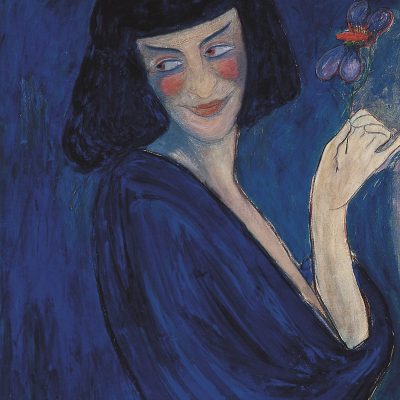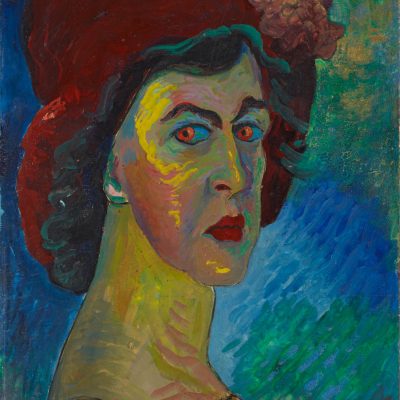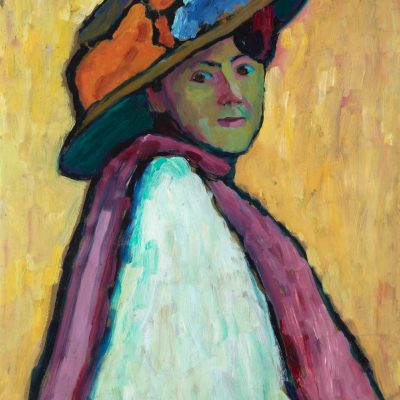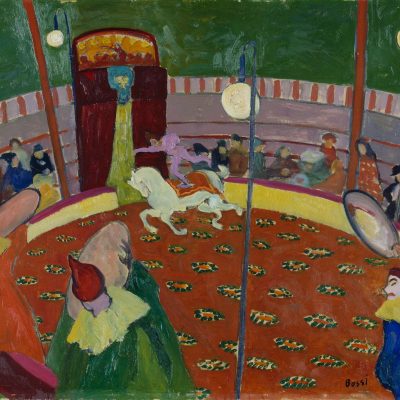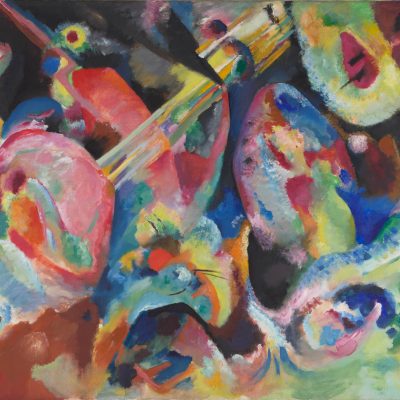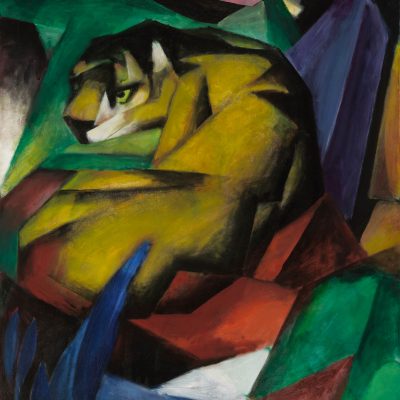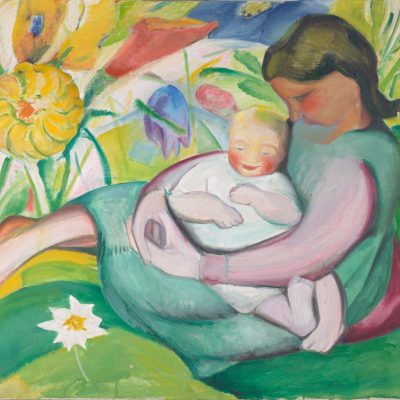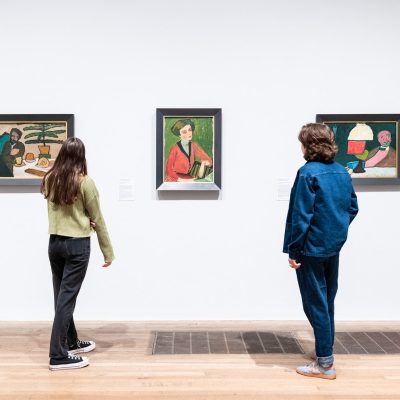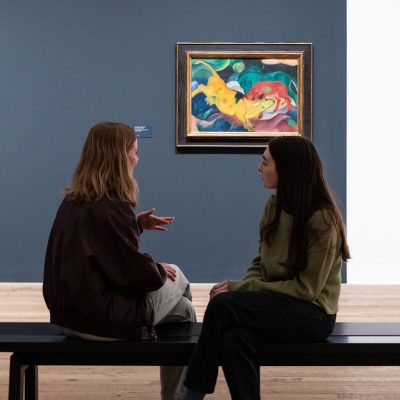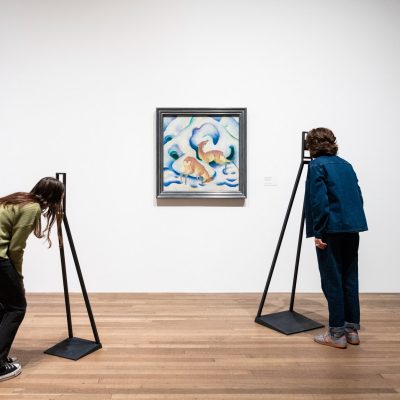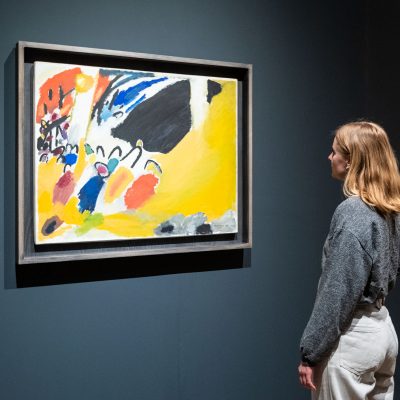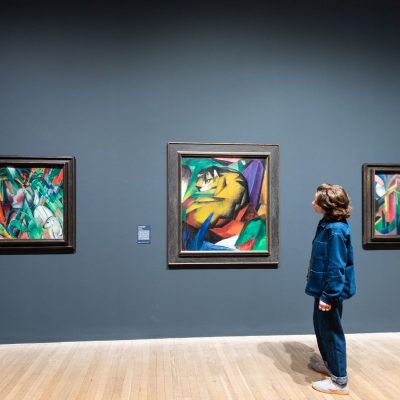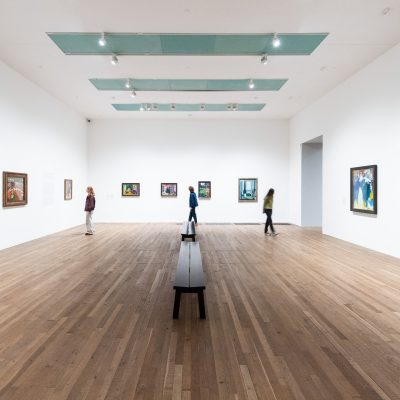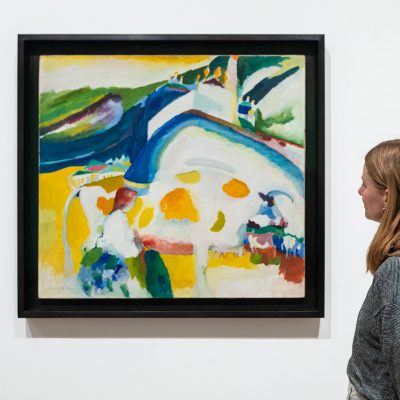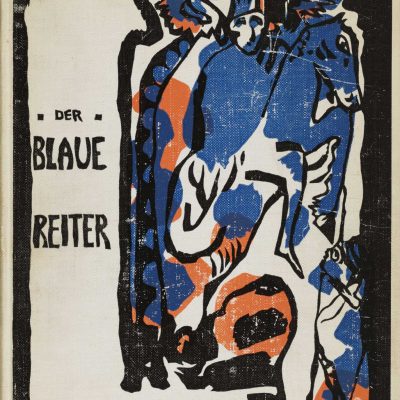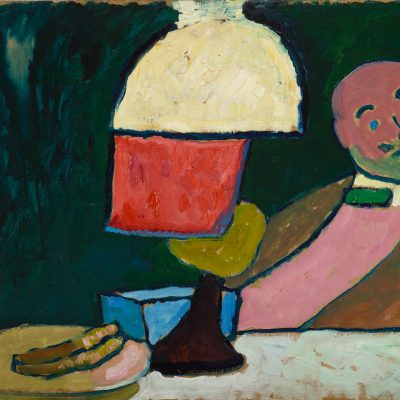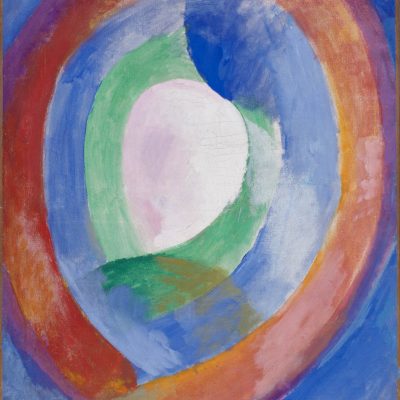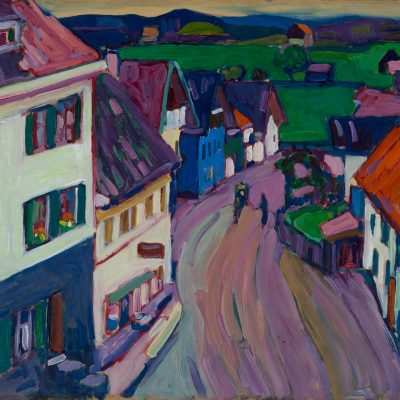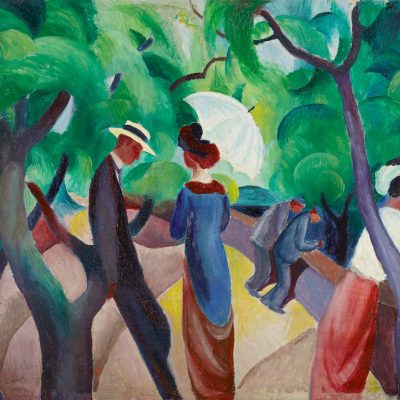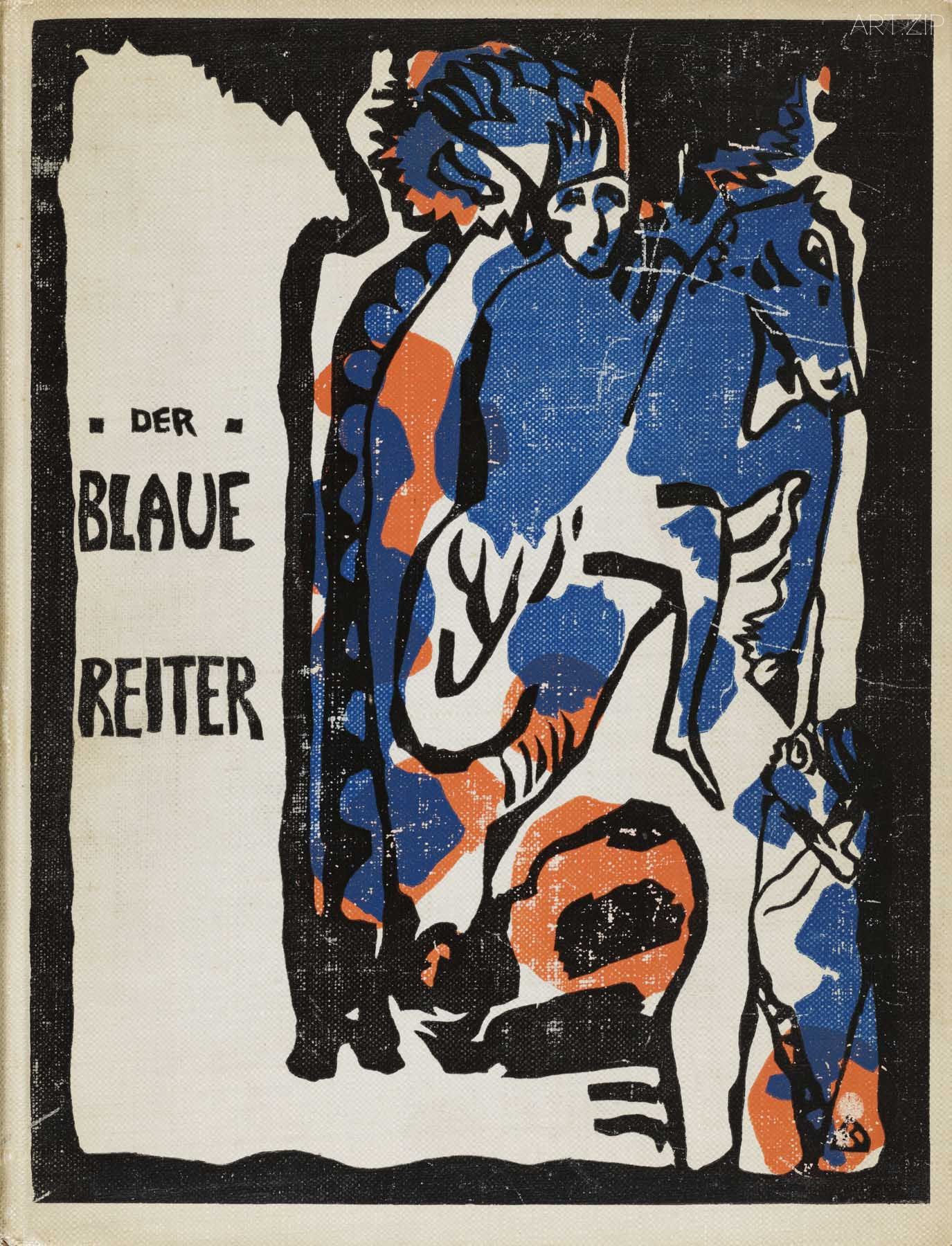
25 April – 20 October 2024
Tate Modern, London
In the early 20th century, an international circle of friends came together to transform modern art. Their story is told in a major new exhibition at Tate Modern – Expressionists: Kandinsky, Münter and the Blue Rider – celebrating their radical experimentation with form, colour, sound and performance. The show draws on the world’s richest collection of expressionist masterpieces at the Lenbachhaus in Munich, alongside rare loans from public and private collections, including works never previously seen in the UK. From celebrated artists like Wassily Kandinsky, Gabriele Münter, Franz Marc and Paul Klee, to previously overlooked figures like Wladimir Burliuk and Maria Franck-Marc, the exhibition reveals the multicultural and transnational nature of this key moment in early modernist art.
The Blue Rider (Der Blaue Reiter) was a loosely affiliated and diverse network of artists, connected by their desire to express personal experiences and spiritual ideas. They published their groundbreaking Almanac in 1912, edited by Kandinsky and Marc, and staged two public exhibitions in 1911 and 1912. The collective brought together highly individual creatives from across western and eastern Europe and the USA to form ‘a union of various countries to serve one purpose’. They proclaimed that ‘the whole work, called art, knows no borders or nations, only humanity.’
Tate Modern’s exhibition begins with the collective’s core couple of Kandinsky and Münter and their creative network in pre-First World War Munich. Munich at that time was an artistic hub of experimentation where different cultures and experiences converged. A room of stunning portraits and self-portraits introduce this diasporic creative community, including Marianne Werefkin’s Self-Portrait c. 1910 and Münter’s Listening (Portrait of Jawlensky) 1909. A selection of photographs from the Masterpieces of Muhammadan Art exhibition staged in Munich in 1910 and Erma Bossi’s bold and expressive Circus 1909 demonstrate diverse urban experiences, while themes of sexuality and performance are explored through Werefkin’s collaboration with free-style performer Alexander Sacharoff, including her provocative 1909 portrait reflecting the dancer’s androgynous persona.
The urban centre of Munich is contrasted with rural Murnau, a small sub-Alpine Bavarian town which became home for Münter and Kandinsky from 1909. This space for creative exchange and artistic experimentation inspired a new search for spirituality and an interest in folk art. Encounters with the local landscape and vernacular culture influenced a move to expressive painterly compositions focused on the power of line and colour, leading Kandinsky and Münter to radically new approaches in both abstract and figurative painting such as Improvisation Deluge 1913 and Portrait of Marianne Werefkin 1909. Meanwhile, their friends and collaborators Marc and Franck-Marc explored the animal world and the creativity of children through works such as Tiger 1912 and Girl with Toddler c. 1913.
Some rooms offer visitors experiential environments focused on single works which capture modernism’s fascination with sound, colour and light. These include Kandinsky’s Impression III (Concert) 1911, revealing his interest in the neurodiverse condition known as synaesthesia in which one of the senses is experienced through another, and Franz Marc’s 1911 Deer in the Snow II, whose mysteries are unlocked through an exploration of colour theory and optics.
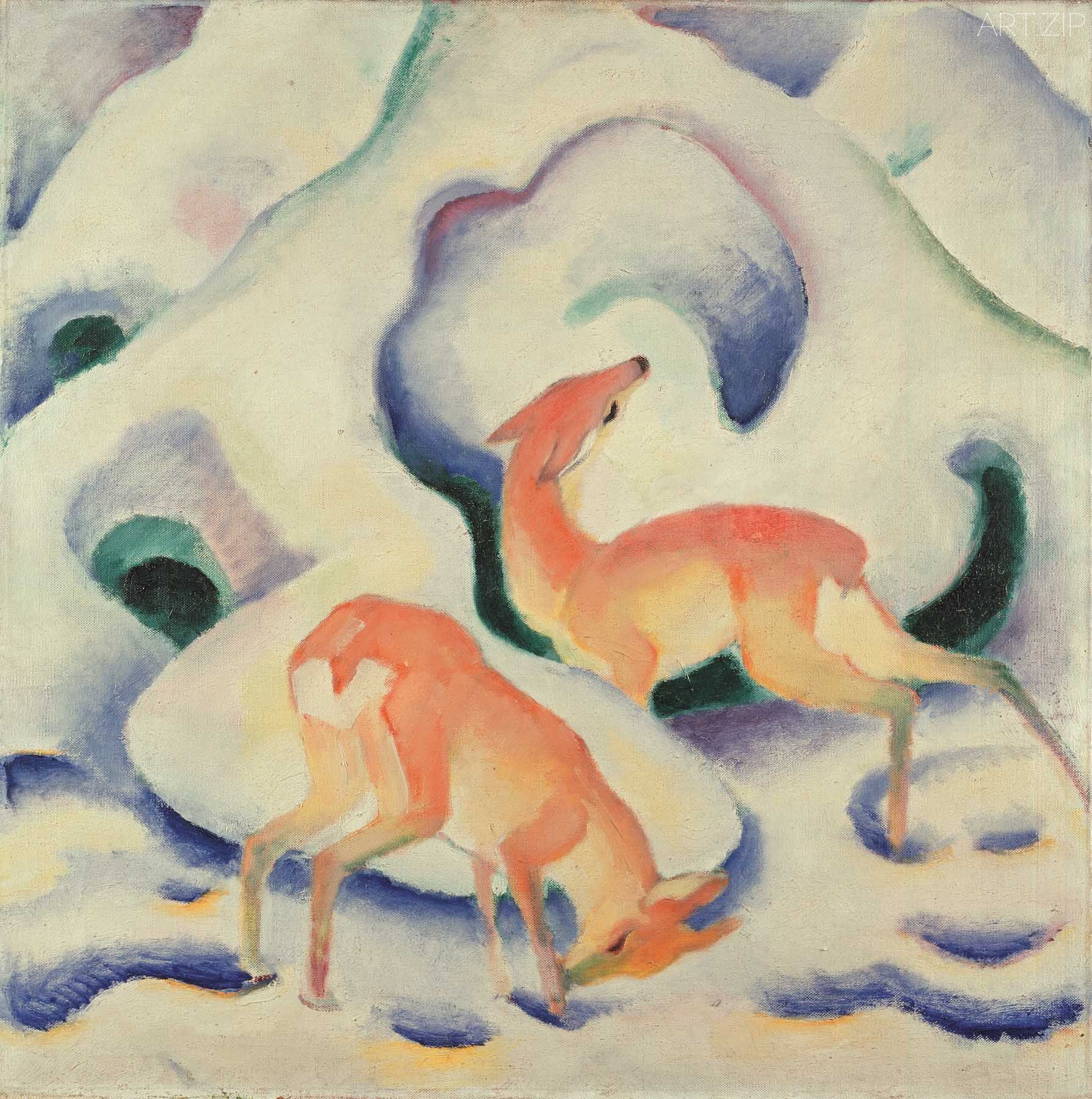
Franz Marc, Deer in the Snow II, 1911, Lenbachhaus Munich, Donation of Elly Koehler.
The exhibition concludes by showing how the Blue Rider artists ensured their lasting legacy in ways we recognise today – publishing manifestos and editorials, curating exhibitions, touring shows, and fostering relationships with museums and galleries. Münter staged a solo show at Berlin’s Der Sturm, Klee’s Legend of the Swamp 1919 nearly perished in the infamous Degenerate Art exhibition of 1937, while Kandinsky’s text On the Spiritual in Art was translated and is still published internationally across the globe. With the outbreak of the First World War in August 1914 the collective was dispersed, but their ideas and aspirations for a transnational creative community still resonate powerfully today.
在二十世紀初,來自世界各地的一群藝術家聚集一堂,共同開創了現代藝術的新篇章。他們的故事在泰特現代美術館的全新展覽《表現主義者:康定斯基、芒特與藍騎士》中得到呈現,該展覽突顯了他們在形式、色彩、聲音和表演方面的創新實驗。此展覽匯聚了來自慕尼黑倫巴赫豪斯美術館的表現主義藝術精品,並結合來自全球公共收藏及私人收藏中罕見的借展作品,其中包括不少首次在英國展出的作品。從康定斯基、芒特、弗朗茨·馬克和保羅·克利等著名藝術家,到此前較少被關注的人物,如弗拉基米爾·布爾柳克和瑪麗亞·弗蘭克-馬克,此次展覽展示了這一關鍵時刻早期現代主義藝術的多元文化和跨國特色。
「藍騎士(Der Blaue Reiter)」是由一群多元且風格迥異的藝術家組成的鬆散聯盟,他們通過表達個人體驗和精神理念而連結在一起。1912年,他們出版了具有開創性的年鑑,由康定斯基和馬克編輯,並在1911年及1912年舉辦了兩場公開展覽。這個集體匯集了來自歐洲西部、東部以及美國的高度獨立創意人士,形成了一個致力於共同目標的跨國聯盟。他們宣稱:「藝術作為一個整體,超越國界和民族,它只屬於人類。」
泰特現代美術館的展覽以康定斯基和芒特這對核心伴侶,以及他們在第一次世界大戰前於慕尼黑形成的創意網絡為起點。當時的慕尼黑是一個藝術實驗中心,不同文化和經驗在此交匯。展覽通過一系列肖像和自畫像介紹了這個散居的創意群體,包括瑪麗安娜·韋列夫金的《自畫像(1910)》和芒特的《傾聽(亞文斯基的肖像)(1909)》。此外,一系列來自1910年慕尼黑《穆斯林藝術精品展》的照片及埃瑪·博西的《馬戲團(1909)》展示了豐富的城市生活面貌。展覽同時透過韋列夫金與自由風格表演者亞歷山大·薩沙羅夫的合作,深入探討了性別和表演藝術主題,其中她於1909年創作的肖像,巧妙呈現了舞者的雙性特質。
慕尼黑的都市中心與穆爾瑙的鄉村生活形成了鮮明對比,穆爾瑙是位於阿爾卑斯山下的小巴伐利亞鎮,自1909年起成為芒特和康定斯基的家。這裡的創意交流和藝術實驗激發了對靈性的新探索和對民間藝術的興趣。他們與當地景觀和民俗文化的接觸推動了向表現性繪畫構圖的轉變,專注於線條和色彩的力量,引導康定斯基和芒特在抽象和具象繪畫中採取了激進的新方法,如《即興洪水(1913)》和《瑪麗安娜·韋列夫金的肖像(1909)》。同時,他們的朋友和合作者馬克和弗蘭克-馬克通過作品探索了動物世界和兒童的創造力,如《老虎(1912)》和《帶小孩的女孩(1913)》。
一些展廳為觀眾提供了專注於單一作品的體驗環境,這些作品捕捉了現代主義對聲音、色彩和光的迷戀。其中包括康定斯基的《印象III(音樂會)1911》,揭示了他對稱為共感覺的神經多樣性狀態的興趣,這是一種通過一種感覺體驗另一種感覺的現象;以及弗朗茨·馬克的《雪中的鹿II(1911)》,通過對色彩理論和光學的探索,揭開了作品中的神秘面紗。
展覽的結尾展示了「藍騎士」藝術家們如何以今日仍被認可的方式確保了他們的持久遺產——出版宣言與社論、策劃展覽、巡迴展示,以及與博物館和畫廊建立關係。芒特在柏林的德斯特姆畫廊舉辦了個展,克利的《沼澤的傳說(1919)》幾乎在1937年惡名昭彰的《墮落藝術展》中被毀,康定斯基的《論藝術中的精神性》已被翻譯並仍在全球範圍內發行。隨著1914年8月第一次世界大戰的爆發,這個集體被迫解散,但他們對於一個跨國創意社群的理念與願景,至今仍然產生深遠的影響。

